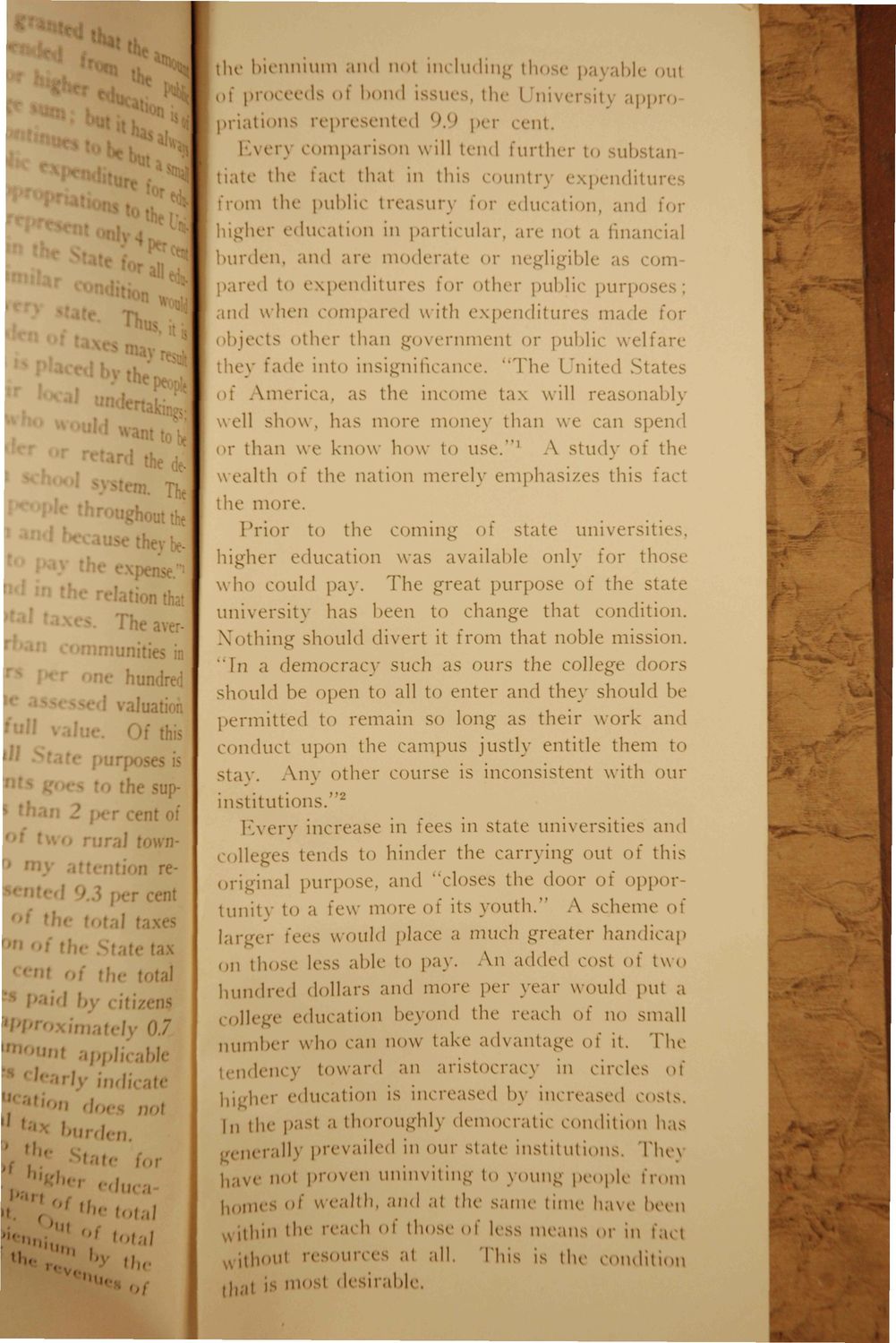Caption: Booklet - State University and Taxation (1929)
This is a reduced-resolution page image for fast online browsing.

EXTRACTED TEXT FROM PAGE:
k ' , | l h e b i c n n i u m a n d not iiu ludin tin p;, ,1,],. ,,,il • 1 » " m • • - \ II • « of proceeds of bond issues, the I fniversit) appropriations represented 9.9 per i ent, Everj comparison will tend further to substantiate the fact that in this country enditun from the public treasury for education, and for higher education in particular, an- not a financial burden, and arc moderate or negligible as compared to expenditures tor other public purposes; and when compared with expenditur made for .: Th t p, w >bjects other than government or public welfare they t'ade into insignificance. "The United Stat' if America, as the income tax will reasonable well show, has more money than we can spend 1 or than we know how to use." A study of th wealth of the nation merely emphasizes this fact the more. Trior to the coming ot state universities. higher education was available only for those who could pay. The great purpose of the state university has been to change that condition. Nothing should divert it from that noble mission. "In a democracy such as ours the college doors hould be open to all to enter and they should be permitted to remain so long as their work and conduct upon the campus justly entitle them to tay. Any other course is inconsistent with our 2 institutions." Every increase in fees in state universities and olleges tends to hinder the carrying out of this original purpose, and "closes the door of opportunity to a few more of its youth." A scheme of lar er fees would place a much greater handicap on those less able to pay. An added cost o\ two hundred dollars and more per year would put a ollege education beyond the reach of no small * t; • pe nt r n • 1 : a\ inities hun tluati ' th irj the su] ™ " nt ru J town my art n re •CT cent h< *i Ppi lb KJ 7 nl ; ppli( We number who can now take advantage o\ it. The ' ' '"' 'I- , nol '" burden >- . I n , tendency toward an aristocracy in circles i)( higher lucation is increased by increased costs. I,, j) )r past a thoroughly democratic condition has generally prevailed in our state institutions. Thej | i a v e not proven uninviting to young people from h o m e s of w e a l t h , a n d at the s a m e t u n e h a \ e been SS1||IIII total »., '" •' total " th- rea< h of t h o s e of less m e a n s or in t.u t without resoun i s at all. ,1,;,! is mosl desirabli This is the condition
|